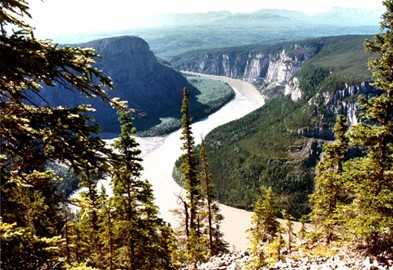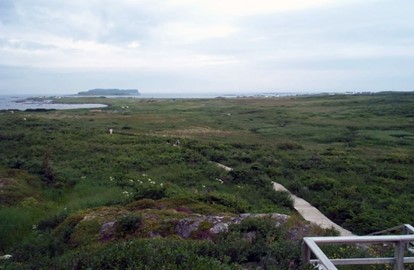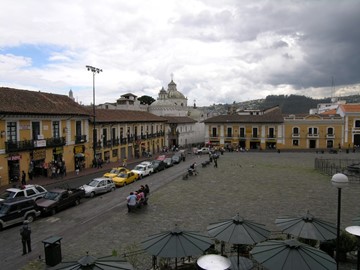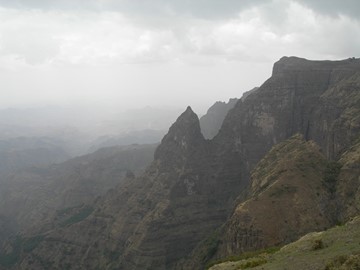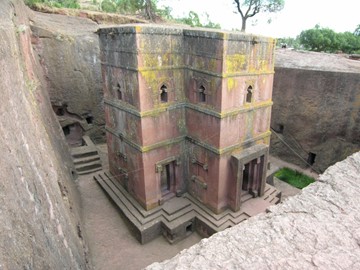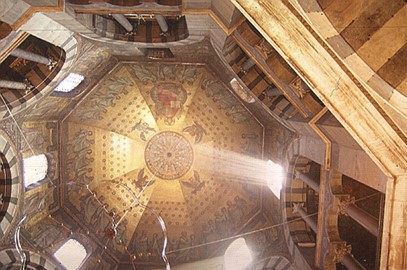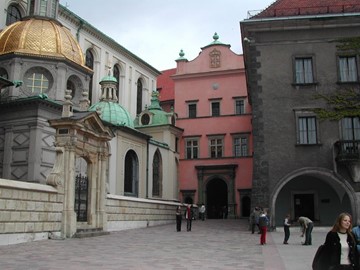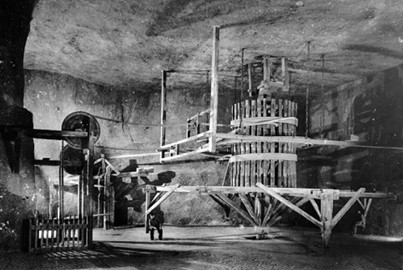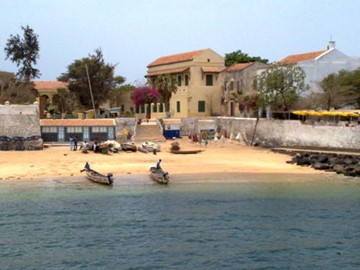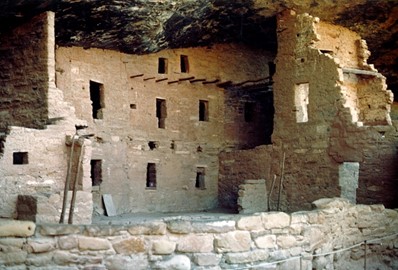search
Kathmandu Valley
Kathmandu Valley, a UNESCO World Heritage site in Nepal, is renowned for its rich cultural heritage and historical significance. This ancient region is home to an array of stunning temples, palaces, and monuments, reflecting a unique blend of Hindu and Buddhist traditions. Its well-preserved medieval architecture, intricate wood carvings, and vibrant festivals highlight the artistic and spiritual legacy of the Newar people, the valley’s indigenous inhabitants. The site’s enduring charm lies in its ability t... Read More
Ohrid
The Ohrid region, a UNESCO World Heritage site spanning Albania and Macedonia, is renowned for its unique blend of natural beauty and cultural significance. Lake Ohrid, one of Europe’s oldest and deepest lakes, anchors the area with its crystal-clear waters and rich biodiversity. The region boasts a wealth of historical treasures, including ancient churches, monasteries, and archaeological sites that reflect its Byzantine and Ottoman influences. This picturesque destination attracts visitors with its serene... Read More
Urnes Stave Church
Urnes Stave Church, a UNESCO World Heritage site, is a remarkably preserved example of 12th-century Scandinavian wooden architecture. Built around 1130, it showcases intricate wood carvings, including the famous 'Urnes style' animal motifs on its north portal, blending Norse and Christian influences. The church stands as a testament to medieval craftsmanship, with its stave construction—a technique using vertical wooden posts—demonstrating both durability and artistic sophistication. Today, it serves as a h... Read More
Bryggen
Bryggen, a UNESCO World Heritage site in Norway, is a historic waterfront district renowned for its well-preserved wooden buildings dating back to the Hanseatic League era. This vibrant area showcases a unique blend of Scandinavian and German architectural influences, with colorful gabled structures lining the wharf. Once a bustling trading hub for merchants, it now serves as a cultural landmark, housing museums, shops, and restaurants that reflect its rich maritime heritage. Its significance lies in its re... Read More
Auschwitz Birkenau
Auschwitz-Birkenau, a UNESCO World Heritage site in Poland, served as a Nazi concentration and extermination camp during World War II, where over 1.1 million people, primarily Jews, were systematically murdered between 1940 and 1945. Established by the Germans, it became a central symbol of the Holocaust, featuring gas chambers, crematoria, and barracks that stand as a somber testament to the atrocities committed. Today, it functions as a memorial and museum, preserving the history of the victims and educat... Read More
Stari Ras and Sopocani
Stari Ras and Sopocani, a UNESCO World Heritage site in Serbia, represent a significant historical and cultural landmark from the medieval period. Stari Ras, an early capital of the Serbian state, features remnants of ancient fortifications, churches, and monasteries that showcase the region’s political and religious past. Nearby, the Sopocani Monastery, founded in the 13th century, is renowned for its well-preserved frescoes, considered masterpieces of European medieval art. Together, they highlight Serbia... Read More
Damascus
The Ancient City of Damascus, a UNESCO World Heritage site in Syria, is one of the oldest continuously inhabited cities in the world, with a history dating back over 11,000 years. Renowned for its well-preserved medieval architecture, the city features significant landmarks like the Umayyad Mosque, a masterpiece of Islamic design, and bustling souks that reflect its rich cultural and commercial past. Its strategic location made it a vital hub for trade and civilization, blending influences from Roman, Byzan... Read More
Carthage
Carthage, a UNESCO World Heritage site in Tunisia, is an ancient city founded by the Phoenicians in the 9th century BCE, renowned for its historical significance as a major Mediterranean power. It features impressive archaeological remains, including the Roman Antonine Baths, the Punic Ports, and the Byrsa Hill citadel, showcasing a blend of Phoenician, Roman, and Byzantine influences. Once a rival to Rome, Carthage played a pivotal role in the Punic Wars before its destruction and later reconstruction by t... Read More
Amphitheatre of El Jem
The Amphitheatre of El Jem, a UNESCO World Heritage site in Tunisia, is an impressive Roman-era monument renowned for its well-preserved structure and historical significance. Constructed in the 3rd century AD, this grand amphitheater once hosted gladiatorial contests and public spectacles, showcasing the architectural prowess of the Roman Empire. Its massive stone walls and tiered seating, capable of holding up to 35,000 spectators, stand as a testament to its past grandeur. Today, it remains a striking sy... Read More
Medina of Tunis
The Medina of Tunis, a UNESCO World Heritage site in Tunisia, is a historic urban center founded in 698 AD around the Zitouna Mosque, flourishing under the Almohad and Hafsid dynasties from the 12th to 16th centuries as one of the Islamic world’s greatest cities. It features a well-preserved maze of narrow streets, souks, and over 700 monuments, including palaces, mosques, and mausoleums, reflecting a rich blend of Arab-Muslim architecture and cultural heritage. Recognized in 1979, it exemplifies traditiona... Read More
Ngorongoro
Ngorongoro, a UNESCO World Heritage site in Tanzania, is a breathtaking natural wonder renowned for its massive volcanic caldera, formed millions of years ago. This unique ecosystem supports a diverse array of wildlife, including the 'Big Five' (lion, leopard, elephant, buffalo, and rhinoceros), making it a prime destination for safari enthusiasts. The site also holds significant archaeological value, with evidence of early human ancestors dating back over three million years, offering a glimpse into our ev... Read More
Grand Canyon
Grand Canyon National Park, a UNESCO World Heritage site in the USA, is renowned for its vast, colorful canyon carved by the Colorado River over millions of years. It showcases stunning geological formations, with layers of rock revealing Earth's history, and offers breathtaking vistas that attract millions of visitors annually. The park also preserves diverse ecosystems, rare wildlife, and significant cultural heritage tied to Indigenous peoples.
Everglades
Everglades National Park, a UNESCO World Heritage Site in the USA, is a vast subtropical wilderness renowned for its unique ecosystem. It serves as a critical habitat for numerous rare and endangered species, including the manatee, American crocodile, and Florida panther. The park features a mix of freshwater sloughs, marl prairies, and coastal mangroves, supporting a rich biodiversity. Its significance lies in its role as a vital watershed and its preservation of one of the world’s most distinctive natural... Read More
Independence Hall
Independence Hall, a UNESCO World Heritage site in the United States, is a historic landmark where the Declaration of Independence was adopted in 1776 and the U.S. Constitution was drafted in 1787. Constructed between 1732 and 1753, this Georgian-style brick building served as the meeting place for the Second Continental Congress and the Constitutional Convention. Today, it stands as a symbol of American democracy and is preserved within a national historical park, offering visitors a glimpse into the natio... Read More
Nahanni
Nahanni National Park, a UNESCO World Heritage site in Canada, is a rugged wilderness renowned for its dramatic landscapes and geological wonders. Featuring deep canyons, towering waterfalls like Virginia Falls, and unique tufa mounds, it showcases the raw beauty of untouched nature shaped by ancient river systems. Recognized for its ecological and scenic significance, it stands as a pristine testament to the region’s wild heritage.
L’Anse aux Meadows
L’Anse aux Meadows, a UNESCO World Heritage site in Canada, is an 11th-century Norse settlement, the earliest known European presence in North America. Featuring sod-walled structures and artifacts like iron nails, it confirms Viking exploration 500 years before Columbus. Recognized for its historical significance, it stands as a pivotal link to transatlantic discovery.
Galápagos Islands
The Galápagos Islands, a UNESCO World Heritage site in Ecuador, are a volcanic archipelago renowned for their unique biodiversity and role in Darwin’s theory of evolution. Home to giant tortoises, marine iguanas, and diverse birdlife, they feature stark landscapes and pristine ecosystems. This natural laboratory showcases the wonders of adaptation and conservation.
Quito
The City of Quito, a UNESCO World Heritage site in Ecuador, is a colonial gem founded in the 16th century, blending Spanish architecture with indigenous influences. Known for its well-preserved historic center, ornate churches, and cobblestone plazas, it reflects a rich cultural heritage. This high-altitude city offers a striking testament to Andean colonial history.
Simien
Simien, a UNESCO World Heritage site in Ethiopia, is a dramatic mountain landscape of jagged peaks, deep valleys, and rare biodiversity. Home to the endangered Ethiopian wolf and Gelada baboon, its rugged plateaus showcase stunning natural beauty. This site highlights Ethiopia’s ecological richness and geological splendor.
Lalibela
Lalibela, a UNESCO World Heritage site in Ethiopia, is a medieval marvel of 11 rock-hewn churches carved from solid stone in the 12th and 13th centuries. Built as a 'New Jerusalem,' these monolithic structures feature intricate designs and sacred significance. This site showcases Ethiopia’s extraordinary Christian heritage and architectural ingenuity.
Aachen Cathedral
Aachen Cathedral, a UNESCO World Heritage site in Germany, is a masterpiece of Carolingian architecture, renowned for its historical and cultural significance. Constructed under Charlemagne in the late 8th century, it served as his palatine chapel and later became the coronation church for German kings. The cathedral’s octagonal dome and intricate mosaics reflect a blend of Roman, Byzantine, and Germanic influences. Its treasury houses an exceptional collection of medieval artifacts, including the reliquary... Read More
Kraków
The Historic Centre of Kraków, a UNESCO World Heritage site in Poland, is renowned for its well-preserved medieval architecture and rich cultural history. This vibrant area features landmarks like the Wawel Castle, a former royal residence, and the Main Market Square, one of Europe’s largest medieval squares, surrounded by colorful townhouses and the iconic St. Mary’s Basilica. The site also includes the historic Jewish quarter of Kazimierz, reflecting centuries of cultural diversity. Its significance lies ... Read More
Wieliczka and Bochnia Salt Mines
The Wieliczka and Bochnia Royal Salt Mines, a UNESCO World Heritage site in Poland, are historic underground complexes renowned for their centuries-long salt extraction history dating back to the 13th century. These mines feature an intricate network of tunnels, chambers, and saline lakes, adorned with remarkable salt-carved sculptures, chapels, and artworks created by miners over generations. They stand as a testament to human ingenuity and industrial heritage, offering a unique glimpse into medieval minin... Read More
Island of Gorée
The Island of Gorée, a UNESCO World Heritage site off the coast of Senegal, is a small yet historically significant island known for its role in the Atlantic slave trade. It served as a key trading post where enslaved Africans were held before being shipped across the ocean, with sites like the House of Slaves standing as poignant reminders of this dark chapter. Today, the island preserves its colonial architecture and museums, offering insight into its past while attracting visitors globally. Its recogniti... Read More
Mesa Verde
Mesa Verde National Park, a UNESCO World Heritage Site in the United States, preserves the ancient cliff dwellings and archaeological treasures of the Ancestral Puebloans, who thrived there from around 600 to 1300 CE. The park showcases over 4,000 sites, including well-preserved stone villages built into cliff alcoves, offering a glimpse into their sophisticated culture and architecture. It serves as a vital link to understanding the history and resilience of Indigenous peoples in the region, with its drama... Read More














